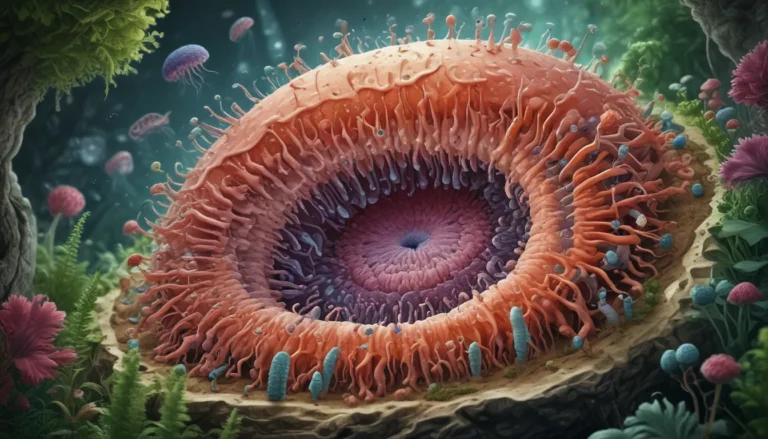A Note About Images: The images used in our articles are for illustration purposes only and may not exactly match the content. They are meant to engage readers, but the text should be relied upon for accurate information.
Welcome to the intriguing world of plant homeostasis, where the balance of life is maintained with precision and grace. Plants, like tiny superheroes, possess remarkable adaptations that enable them to thrive in diverse environments. From adjusting leaf angles to releasing scents to communicate with beneficial organisms, plants have evolved intricate mechanisms to ensure their internal stability despite external challenges. Join us as we unravel the enigmatic facts surrounding plant homeostasis and explore the wonders of these photosynthetic organisms.
Understanding Plant Homeostasis
Plants boast a unique cellular structure that plays a crucial role in water regulation. Cell walls and specialized organelles called vacuoles work harmoniously to maintain water balance within the plant. Stomata, the tiny gatekeepers on the surface of leaves, control the exchange of carbon dioxide and water, balancing the plant’s need for photosynthesis with the risk of water loss. Additionally, the vascular tissues of xylem and phloem transport essential nutrients throughout the plant, ensuring optimal distribution for growth and survival.
Adapting to Environmental Challenges
Plants showcase a variety of adaptations to cope with environmental stressors. The hormone abscisic acid, for instance, helps plants respond to water scarcity by triggering mechanisms to conserve water and protect against drought stress. Plants also have the ability to adjust their leaf orientation to optimize light absorption, enhancing their efficiency in photosynthesis. Root hairs play a crucial role in increasing the surface area for water absorption from the soil, ensuring adequate nutrient uptake.
Communication and Coordination in Plant Life
Plants exhibit a fascinating array of communication strategies to interact with their surroundings. By releasing volatile compounds, plants can attract beneficial organisms like pollinators or repel herbivores, creating a complex network of chemical signaling in the natural world. Plant hormones, such as auxins, cytokinins, and gibberellins, regulate various aspects of growth and development, orchestrating the plant’s response to environmental cues.
Survival Strategies and Resilience
Plants have evolved mechanisms to thrive in challenging conditions, such as saline environments and insect infestations. When exposed to high salt concentrations, plants activate specialized mechanisms to exclude or compartmentalize salt ions, enabling them to flourish. Some plants, like the Mimosa pudica, can undergo reversible leaf movements in response to physical touch or environmental stimuli, showcasing their adaptability to changing circumstances.
The Intricacies of Plant Physiology
The circadian clock, an internal timekeeping mechanism in plants, regulates physiological processes based on day and night cues. This biological clock helps coordinate activities like photosynthesis and growth, optimizing the plant’s energy utilization. Additionally, plants form symbiotic relationships with nitrogen-fixing bacteria, enhancing soil fertility through the conversion of atmospheric nitrogen into a usable form.
Unveiling Nature’s Secrets
As we delve deeper into the mysteries of plant homeostasis, we gain a profound appreciation for the resilience and adaptability of these photosynthetic organisms. By unraveling the intricate mechanisms that govern plant life, we not only enhance our agricultural practices but also contribute to a deeper understanding of the natural world. Plant homeostasis serves as a testament to the intricate balance of nature and the wonders that unfold when we explore the marvels of plant biology.
Frequently Asked Questions
-
What is homeostasis in plants?
Homeostasis in plants refers to the ability of a plant to maintain a stable internal environment despite external changes, regulating factors like water balance, temperature, nutrient uptake, and growth. -
Why is homeostasis important in plants?
Homeostasis is vital for plant survival as it enables them to adapt and thrive in different environments, efficiently utilizing resources and responding to external stimuli to maintain optimal growth and functioning. -
How do plants maintain water balance?
Plants maintain water balance through transpiration, where water is lost through stomata on the leaf surface. Factors like temperature, humidity, and soil water availability influence the rate of transpiration. -
What is the role of hormones in plant homeostasis?
Hormones act as chemical messengers, regulating growth, development, and responses to environmental stimuli in plants. They play a vital role in coordinating the plant’s adaptation to changes in its surroundings. -
How can the study of plant homeostasis benefit agriculture?
Understanding plant homeostasis can improve agricultural practices by optimizing crop production, enhancing stress tolerance, and developing strategies for efficient resource utilization. This knowledge helps farmers grow healthier and more resilient crops sustainably.
Dive into the captivating world of plant physiology and unravel the extraordinary mechanisms that drive plant life. Discover the intricate balance of nature as you explore the remarkable resilience and adaptability of plants. Let the marvels of plant homeostasis inspire your curiosity and deepen your appreciation for the wonders of the natural world.






